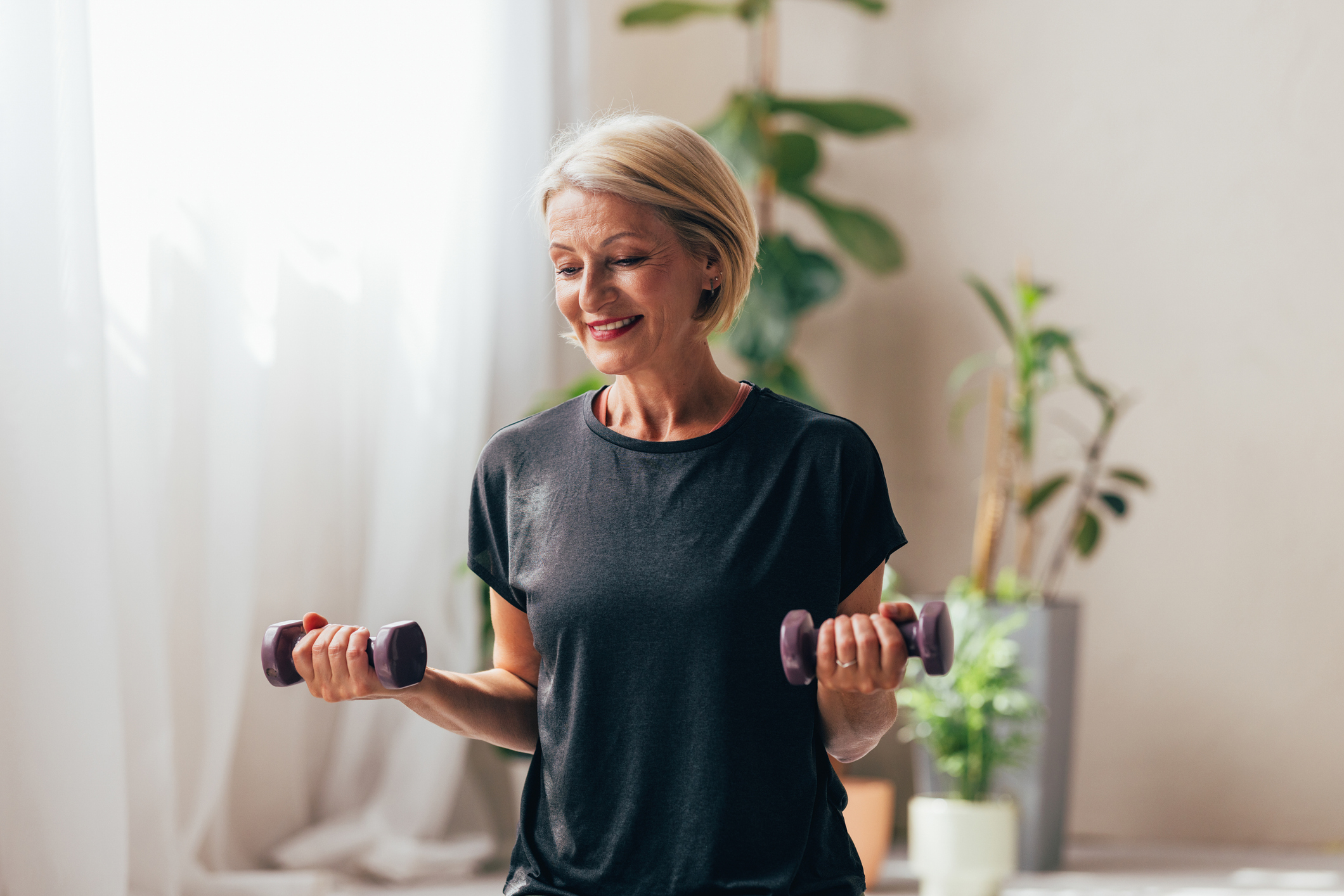A trainer says everyone forgets to strengthen this important muscle group—here's how you can target it in your workouts
Practicing these two simple moves could help you avoid injury


Strength training is one of the best ways to build a fit and functional body. It helps you maintain muscle mass, improves bone density, and even boosts mobility.
However, it’s easy to get stuck in a rut with strength training, focusing on the same set of muscles while neglecting others. According to ACSM-certified trainer Cara D’Orzio, there’s one group of muscles that nearly everyone forgets: the rotator cuff.
Located around the shoulder joint, this group of muscles and tendons connect the upper arm bone to the shoulder blade. They're responsible for your shoulder mobility and stability, so it's important to look after them.
D’Orazio also says the most common way to injure your rotator cuff is by not training it. "It’s what holds the shoulders together. So, if you don't have rotator cuff strength, that's what leads to injury," she explains.
"Many people only focus on the shoulder and the deltoid muscles and do too many military presses and too many front and lateral raises without doing any exercises to strengthen the rotator cuff."
Here, D'Orazio explains which exercises to do to limit the chance of injuries.
Rotator cuff exercises
For rotator cuff exercises, D’Orazio stresses the importance of using light weights, between five to eight pounds max; you want to avoid excessive strain on the muscles.
Start your week with achievable workout ideas, health tips and wellbeing advice in your inbox.
Add these exercises into your next upper-body dumbbell workout, and try performing them 8-12 times for 2-3 sets.
1. External rotation

- Stand with feet shoulder-width apart and hold light dumbbells in both hands, palms facing upwards. Pin your elbows tight against your side at 90° and hold your wrists straight.
- Keeping your elbows pinned to your body, move the dumbbell out to the sides, bringing your forearm round with control. Your back should be straight and your core engaged.
2. Internal resisted rotation

- Secure a resistance band to a sturdy object, like a gym machine or door handle, and stand next to the band with feet shoulder-width apart.
- Keeping your elbow bent at 90° and pinned to your side, bring your forearm and hand out to the side and grasp the resistance band.
- Pull the band towards you, across your body, until your hand touches your stomach. You should feel the band ‘resisting’ as you move. Your back should be straight and core engaged.
- Bring your arm back to its starting position. That’s one repetition. Repeat for the desired number of times, then switch arms.
Need some weights for your home workouts? Our guide to the best adjustable dumbbells can help

Lois Mackenzie is a Fitness Writer for Fit&Well and its sister site Coach, covering strength training workouts with weights, accessible ways to stay active at home, and training routines for runners. She joined the team from Newsquest Media Group, where she was a senior sports, trends, and lifestyle reporter. She is a dedicated runner, having just completed her first marathon, and an advocate for spending time outdoors, whether on a walk, taking a long run, or swimming in the sea.
Lois holds a Master's degree in Digital Journalism, and has written for Good Health, Wellbeing & The Great Outdoors, Metro.co.uk, and Newsquest Media Group, where her reporting was published in over 200 local newspapers.